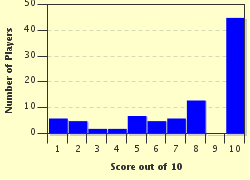Quiz Answer Key and Fun Facts
1. 17 Bruton Street, Mayfair, London
2. The Binnenhof, The Hague, the Netherlands
3. Bolingbroke Castle, Lincolnshire, England
4. Caernarfon Castle, Wales
5. Edinburgh Castle, Scotland
6. Falaise, Normandy, France
7. Hanover, Germany
8. Kensington Palace, London
9. Pembroke Castle, Wales
10. Westminster Abbey, London
Source: Author
Fifiona81
This quiz was reviewed by FunTrivia editor
Pagiedamon before going online.
Any errors found in FunTrivia content are routinely corrected through our feedback system.


